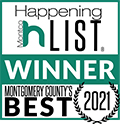Our Philadelphia public adjuster firm, Clarke & Cohen, has seen firsthand the increasing flood risks affecting residential and commercial properties in our area. Climate change has amplified this threat, bringing more intense storms, rising sea levels, and frequent flooding. Understanding these risks and taking proactive steps to protect your property is crucial to Protect your Property from Philadelphia Area Flood Risks.
Understanding Flood Risks in Philadelphia
Philadelphia’s flood risks are multifaceted, involving coastal storm surges, flash floods from heavy rains, and unexpected flooding from blocked storm drains. The Schuylkill and Delaware rivers and the city’s extensive urban infrastructure make certain areas particularly vulnerable.
In recent years, the remnants of hurricanes like Sandy and Ida have caused significant damage and even fatalities. The city’s robust infrastructure sometimes fails under extreme conditions, as seen with the Vine Street Expressway flooding during Ida. These events highlight the necessity for preparedness.
How to Protect Your Property
- Assess Your Flood Risk: Start by identifying if your property is in a high-risk flood zone. FEMA provides maps that can help you determine your flood risk. Understanding your property’s vulnerability is the first step toward adequate preparation.
- Purchase Flood Insurance: Standard homeowners’ insurance policies do not cover flood damage. The National Flood Insurance Program (NFIP) offers protection policies against flood losses. Even if you’re not in a high-risk area, consider purchasing flood insurance, as 25% of flood claims come from low-to-moderate-risk areas.
- Implement Flood Mitigation Measures:
-
- Elevate Important Utilities: Ensure that your electrical systems, heating, ventilation, and air conditioning (HVAC) units are elevated above potential flood levels.
-
- Use Water-Resistant Materials: When renovating, use flood-resistant materials for walls, floors, and insulation.
-
- Install Sump Pumps and Backflow Valves: Sump pumps can remove water accumulating in your basement, and backflow valves prevent sewage from backing up into your home.
4. Create a Flood Emergency Plan:
-
- Evacuation Routes: Familiarize yourself with local evacuation routes and have a plan for reaching higher ground.
-
- Emergency Kit: Prepare an emergency kit with essentials such as water, non-perishable food, medications, important documents, and a hand-crank radio.
-
- Communication Plan: Establish a family communication plan to ensure everyone knows how to reach each other during a flood.
Protecting Commercial Properties
For business owners, flood preparedness involves additional layers of complexity:
- Business Continuity Plan: Develop a comprehensive business continuity plan that includes procedures for protecting data, relocating operations temporarily, and communicating with employees and customers during a flood event.
- Protect Inventory and Equipment: Elevate inventory and critical equipment above potential flood levels. Consider using water-resistant storage solutions for important documents and digital backups.
- Flood Barriers and Shields: Install removable flood barriers and shields to protect entry points such as doors and windows. These can be particularly useful for businesses located on the street level.
- Insurance: Review your commercial insurance policy to ensure it covers flood damage. If it doesn’t, consider purchasing additional coverage through the NFIP or a private insurer.
Community and Government Support
Philadelphia offers resources to help residents and businesses prepare for flooding:
- Emergency Alerts: Sign up for ReadyPhiladelphia to receive emergency alerts about severe weather and flooding. These notifications can provide critical information and time to implement your flood plan.
- Community Resources: The city and local organizations often offer sandbags and other materials before significant storms. Take advantage of these resources to bolster your property’s defenses.
- Grants and Financial Assistance: Look into federal, state, and local grants for flood mitigation projects. Programs like FEMA’s Hazard Mitigation Grant Program (HMGP) can fund property improvements that reduce flood risk.
Personal and Family Safety
During a flood event, personal safety should be the priority:
- Avoid Floodwaters: Never walk or drive through floodwaters. Just six inches of moving water can knock a person down, and a foot can sweep a car away.
- Evacuation: If local authorities issue an evacuation order, follow it promptly. Staying behind to protect property can be extremely dangerous.
- Stay Informed: Keep a battery-operated or hand-crank radio updated on weather conditions and emergency instructions.
The increasing flood risk in Philadelphia necessitates proactive measures to protect lives and property. We urge residents and business owners to take these risks seriously. By understanding the threats, investing in appropriate insurance, implementing flood mitigation measures, and preparing emergency plans, you can significantly reduce the impact of flooding on your home or business. Stay informed, stay prepared, and prioritize safety to navigate the challenges of our changing climate.
For more detailed information on preparing for floods and available resources, visit the WHYY guide on Philadelphia flooding.

